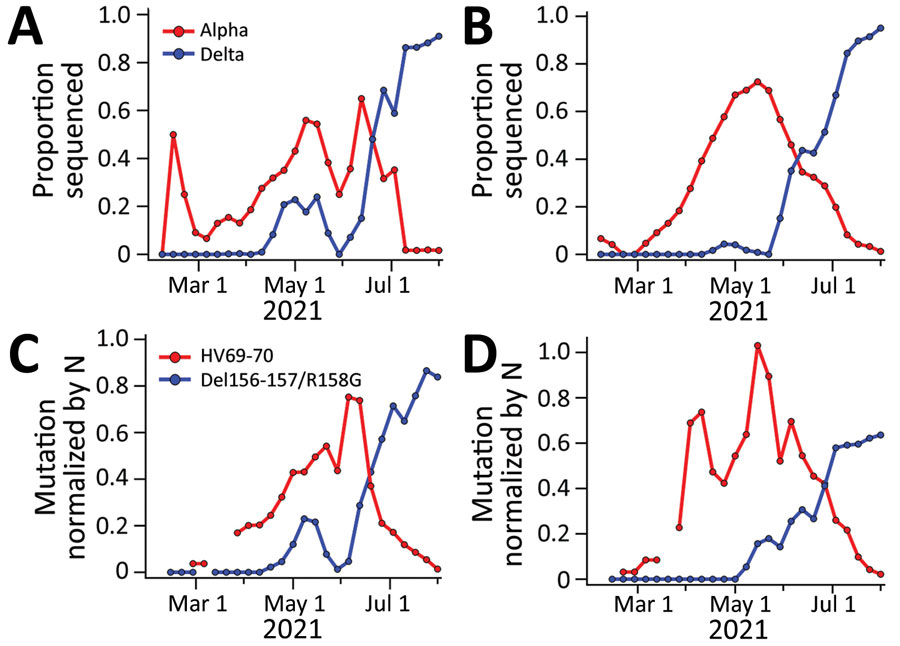Estimating Relative Abundance of 2 SARS-CoV-2 Variants through Wastewater Surveillance at 2 Large Metropolitan Sites, United States
Alexander T. Yu
1
, Bridgette Hughes
1, Marlene K. Wolfe, Tomas Leon, Dorothea Duong, Angela Rabe, Lauren C. Kennedy, Sindhu Ravuri, Bradley J. White, Krista R. Wigginton, Alexandria B. Boehm, and Duc J. Vugia
Author affiliations: California Department of Public Health, Richmond, California, USA (A.T. Yu, T. Leon, A. Rabe, S. Ravuri, D.J. Vugia); California Department of Public Health, Sacramento, California, USA (A.T. Yu, T. Leon, A. Rabe, S. Ravuri, D.J. Vugia); Verily Life Sciences, South San Francisco, California, USA (B. Hughes, D. Duong, B.J. White); Stanford University, Stanford, California, USA (M.K. Wolfe, L.C. Kennedy, A.B. Boehm); Emory University, Atlanta, Georgia, USA (M.K. Wolfe); University of Michigan, Ann Arbor, Michigan, USA (K.R. Wigginton)
Main Article
Figure 3

Figure 3. Comparison of severe acute respiratory syndrome coronavirus 2 variants of concern in wastewater solids with coronavirus disease case isolates, San Jose and Sacramento, California, USA, February 1–July 31, 2021. A, B) Proportion of circulating severe acute respiratory syndrome coronavirus 2 attributable to the Alpha and Delta variants, estimated from isolate sequencing data from cases collected and sequenced over the previous 14-day period in San Jose (A) and Sacramento (B) sewersheds. C, D) Concentrations of mutations found in Alpha (HV69-70) and Delta (Del156-157/R158G) variant viruses, normalized by N gene concentrations in wastewater, averaged over the previous 14 days in San Jose (C) and Sacramento (D). No data are shown for dates for which no measurements were made within the previous 14 days. N, nucleoprotein.
Main Article
Page created: March 03, 2022
Page updated: April 19, 2022
Page reviewed: April 19, 2022
The conclusions, findings, and opinions expressed by authors contributing to this journal do not necessarily reflect the official position of the U.S. Department of Health and Human Services, the Public Health Service, the Centers for Disease Control and Prevention, or the authors' affiliated institutions. Use of trade names is for identification only and does not imply endorsement by any of the groups named above.
